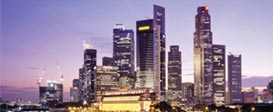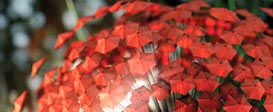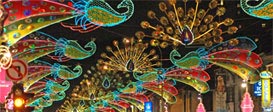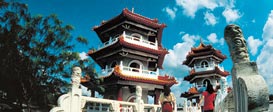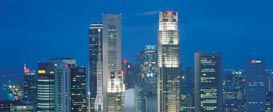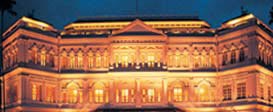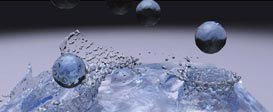Advanced Illumination Techniques for GPU-Based Volume Ray Casting
![]() Full Conference
Full Conference ![]() One-Day Full Conference
One-Day Full Conference
Saturday, 13 December, 08:30 - 12:15
Room 311, 312
Level: Intermediate
In-depth instruction on advanced illumination techniques for volume ray casting implemented on the graphics processing unit (GPU). This course covers fast implementations of local and global illumination techniques for volume data and implicit surfaces, including ambient occlusion, deep shadow maps, and scattering effects.
Volume ray-casting techniques are important for both visual arts and visualisation. They support efficient generation of visual effects and visualisation of scientific data obtained by tomography or numerical simulation. Due to their flexibility, experts agree that GPU-based ray casting is the state-of-the art technique for interactive volume rendering. It will most likely replace existing slice-based techniques in the near future. Volume rendering techniques are also effective for direct rendering of implicit surfaces used for soft-body animation and constructive solid geometry.
The course, which begins with a detailed introduction to the concepts behind GPU-based ray casting, focuses on advanced illumination techniques that approximate physically based light transport more convincingly. Such techniques include interactive implementation of soft and hard shadows, ambient occlusion, and simple Monte-Carlo based approaches to global illumination, including translucency and scattering.
With these techniques, users can interactively create convincing images from volumetric data whose visual quality goes far beyond traditional approaches. Using volume rendering techniques, artists who create medical visualisation for science magazines may now work on tomographic scans directly, without creating polygonal models of anatomical structures.
Prerequisites
A working knowledge of computer graphics and basic programming skills, familiarity with graphics hardware and shading languages, and basic knowledge of volume data and interactive volume-rendering techniques.
Intended Audience
The steadily growing number of developers who create specialized implementations of volume-rendering techniques on state-of-the-art graphics hardware.
Instructors
Christof Rezk-Salama
Universität Siegen
Markus Hadwiger
VRVis Research Center for Virtual Reality and Visualization
Timo Ropinski
Westfälische Wilhelms-Universität Münster
Patric Ljung
Siemens Corporate Research
Instructor Bios
Christof Rezk-Salama
Christof Rezk-Salama has received a PhD from the Friedrich-Alexander-Universität Erlangen-Nürnberg as a scholarship holder of the graduate college 3D image analysis and synthesis. He has worked as a research engineer for the R&D department of Siemens Medical Solutions. Since October 2003, he has been an assistant professor at the Computer Graphics Group of the Universität Siegen. He regularly presents lectures and courses on computer graphics, scientific visualization, character animation, and graphics programming. He has gained practical experience in applying computer graphics to several scientific projects in medicine, geology, and archaeology. He has released the award winning open-source project OpenQVis and is a co-author of the book Real-Time Volume Graphics.
Markus Hadwiger
Markus Hadwiger is a senior researcher at the VRVis Research Center in Vienna. He received his PhD in computer science from the Technische Universität Wien in 2004 and has been a researcher at VRVis since 2000, working in the Basic Research on Visualization group and the Medical Visualization group. He has been involved in several courses and tutorials about volume rendering and visualisation at ACM SIGGRAPH, IEEE Visualization, and Eurographics. He is a co-author of the book Real-Time Volume Graphics published by A K Peters.
Timo Ropinski
Timo Ropinski is a postdoctoral researcher working in the field of medical volume visualisation. After receiving his PhD in 2004 from the Westfälische Wilhelms-Universität Münster, he became a project leader within the collaborative research center SFB 656, a cooperative project of researchers from medicine, mathematics, chemistry, physics, and computer science. His research is focused on interactive aspects of medical volume visualisation with the goal to make these techniques more accessible. He is the initiator of the Voreen open-source project, in which a flexible volume-rendering framework is developed. The results of his scientific work have been published in various international conferences including Eurographics, IEEE VR, VMV, and others.
Patric Ljung
In 2007, Patric Ljung joined Siemens Corporate Research in Princeton, New Jersey, where he works as a research scientist in the Imaging Architectures group. He received his PhD in Scientific Visualization from Linköpings universitet in 2006. Between 1989 and 1995, he worked as a software engineer with embedded and telecom systems, developing software architectures, graphical user interfaces, voice-mail systems, communication protocols, network and interprocess communication, and compilers. His current research interest is in advanced illumination and shading techniques, software architectures for extensible graphics, and management and rendering of large medical datasets.

